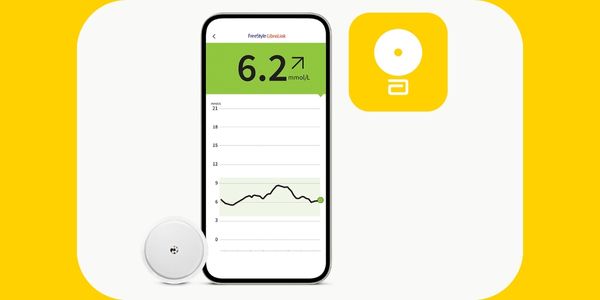Discover how small lifestyle changes can help you reduce glucose naturally. Believe me, it’s simpler than you think!
Ad
Who said taking care of your health has to be complicated? We know that keeping glucose under control is an important task, but that doesn’t mean it’s necessary to take drastic measures, as many still think.
If you’re tired of the same old tips, you’ve come to the right place! Today, I’m going to share with you 10 tips to reduce glucose naturally.
Ad
So come with me to discover how you can reduce glucose and improve your health in a simple and easy way!
1. Include more non-starchy vegetables in your meals
In general, vegetables are sources of fiber, have a low glycemic index and few calories, which helps control glucose. Even so, experts recommend choosing those that do not contain starch. Check out some of them:
- Spinach;
- Leek;
- Zucchini;
- Onion;
- Broccolis;
- Cucumber;
- Pod;
- Asparagus.
It is best that these foods are consumed preferably fresh, but they can also be canned, as long as they do not contain artificial condiments and sauces.
2. Reduce the amount of carbohydrates
Many people still think that glucose increases due to excessive consumption of sweets. However, the main villain in this story may be carbohydrates, as when consumed in excess they cause an increase in glucose, in addition to the accumulation of fat in the body.
But this does not mean that they should be completely eliminated from our daily diet, as they are our body’s main source of energy.
Therefore, the most recommended thing is to reduce the daily amount consumed of white rice, pasta, bread, artificial sweeteners, among others.
3. Keep proper calorie control
Insulin is the hormone responsible for regulating blood glucose levels. Therefore, consuming excess calories can worsen the administration of this hormone by the body.
Therefore, we must adequately control the quality and quantity of the food we eat during our main meals. A nutritionist can help you have better control.
4. Eat foods rich in fiber
Consuming foods rich in fiber is favorable for reducing glucose because fiber helps control blood sugar levels. Fiber slows down the absorption of glucose in the intestine, which helps prevent sugar spikes after meals.
Furthermore, they contribute to the feeling of satiety, helping to control appetite and maintain a healthy weight.
5. Avoid drinking industrialized and artificial drinks
Industrialized and artificial drinks can be delicious to refresh us, especially if they are very cold! However, when we consume artificial juices, soft drinks, teas, coffee, and many more, we end up ingesting a high level of calories.
To avoid this, you can opt for natural juices, natural herbal teas, coconut water, among others.
6. Practice physical activity regularly
Regular physical exercise helps lower blood glucose levels by increasing insulin sensitivity. Furthermore, exercise also contributes to reducing stress and improving sleep quality.
Experts recommend practicing 30 minutes, three times a week, of some aerobic activity, such as swimming, dancing, walking, cycling, etc.
Remembering that it is important, before starting any physical activity, to consult a doctor.
7. Drink plenty of water
Good hydration is essential. Our body is made up of more than 70% water. This makes this liquid so precious to us.
It is worth highlighting that the amount of water recommended daily may vary from person to person, depending on factors such as age, weight, level of physical activity, climate and health conditions. However, doctors usually recommend following the “8 by 8” rule. This rule recommends drinking at least 8 glasses of 250ml of water per day, which is equivalent to 2 liters.
8. Maintain regular monitoring
Regularly monitoring glucose levels is essential, especially for those with diabetes. This helps to prevent complications, control diet, adjust medication, evaluate the impact of physical activity, and be alert for emergencies.
Nowadays, this monitoring can be done more simply with the help of technology. In this sense, devices supported by glucose measurement applications can be great allies in adequate monitoring.
9. Practice stress management techniques
Recent studies have shown that high levels of stress can increase blood glucose, as well as blood pressure and heart rate. To better manage stress, follow some simple strategies:
- Listen to soft music;
- In moments of greater stress, breathe slowly and deeply, at least five times;
- Do some simple stretches or try some yoga poses;
- Discover a new hobby and dedicate some time to it;
- Whenever you can, set aside a moment of the day to do something you enjoy.
If you need it, be sure to seek help from a professional.
10. Reduce caffeine consumption
It is essential for people to know that if they are taking medication to control blood sugar levels, the best option is to avoid caffeinated beverages.
Caffeine can directly interfere with the body’s ability to regulate glucose and, consequently, cause variations in blood sugar levels.
Bonus: Include these foods in your daily diet
Check out a list of foods that can be included in your daily diet below. They will make all the difference when it comes to lowering glucose naturally!
- Nuts;
- Dark green leafy vegetables;
- Skimmed milk and yogurt;
- Whole grains;
- Tomato;
- Blackberries;
- Cherries;
- Blueberry;
- Citrus fruits;
- Cinnamon;
- Sweet potato twelve;
- Beans;
- Avocados.



